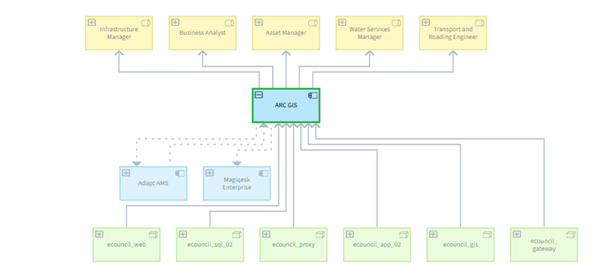Application portfolios - what they are, and how they help.
An application portfolio is a fundamental component of every organisation's IT infrastructure. Put simply, it encompasses all the applications an organisation is using, serving as a repository of software assets. However, despite its significance, many local government IT teams struggle to effectively manage and maintain their application portfolios.
The term 'portfolio' implies the aggregation of applications into a cohesive and accessible format, which is often not the case. Instead, organisations often rely on disparate documents or spreadsheets to catalogue their applications. These can’t hope to record the essential information needed to manage modern application portfolios, leading to fragmented and inefficient management practices and wasted resources.
When IT leaders have comprehensive visibility over their application portfolio, it acts as a consolidated inventory of their software assets. By centralising this information, IT leaders can easily reference, and access critical data related to their applications, facilitating informed decision-making and strategic planning.
Not only that, but an application portfolio enables IT leaders to effectively communicate with stakeholders and senior executives regarding the organisation's IT landscape. By presenting applications as a coherent group of entities, IT leaders can articulate the complexity and significance of various software assets, providing decision-makers with a clear understanding of what's involved.
The power of metadata for application portfolio management
The applications themselves are important, but they're not everything. The true value lies in the metadata that surrounds them. Metadata is the backbone of the portfolio, providing crucial insights and context that enable IT leaders to make informed decisions and effectively communicate with stakeholders. Here's why:
Metadata provides valuable information about the usage and adoption of applications within an organisation. For example, knowing that Adobe Creative Suite is utilised by 50% of users sheds light on its significance and impact across the organisation.
Metadata includes details such as the version of an application and its lifecycle status. This information is essential for identifying outdated or unsupported applications that may pose security risks or hinder productivity.
Metadata indicates important deployment details, such as whether an application is hosted in the cloud or on-premises. This distinction influences various aspects of management and governance, including security protocols and scalability.
Metadata includes information about application ownership and subject matter experts, enabling clear accountability and facilitating communication among stakeholders.
Perhaps most crucially, metadata captures the relationships between applications and the broader business context. This includes mapping applications to specific business services or capabilities, illustrating how technology supports organisational objectives. For example, consider the relationship between an ERP system and a specific business service such as dog control in a local council. If the ERP system experiences downtime, it directly impacts the delivery of the dog control service, highlighting the interconnectedness of applications and business operations.
By leveraging metadata to understand these relationships, IT leaders can effectively communicate the impact of IT decisions on business outcomes, gaining support from executive stakeholders and driving alignment between technology investments and organisational goals.
High Level Application Portfolio Map View with ARC GIS highlighted.
ARC GIS Application View
Example of ARC GIS Metadata
Gain clarity, visibility, and control over your application portfolio
It's important to understand the significance of application portfolio management, including the role of metadata. Metadata provides valuable insights into application usage, versioning, resiliency, licensing, and business alignment. These insights are crucial for effective decision-making and optimising IT resources.
By breaking down the process into manageable stages and focusing on tangible outcomes, organisations can gradually enhance their application portfolio management practices and drive strategic alignment between IT and business objectives. Remember: application portfolio visibility is not just about knowing what applications are in use but understanding their impact on business operations and aligning IT investments with strategic priorities.
Questions Local Government IT Leaders can consider
Do I have visibility (current state view) of my Application Portfolio that I could share with my Executive team?
Can I show key metrics across our portfolio – including risk, resiliency and cost?
Can I use these metrics to highlight where investment is required?
Let's chat about how an Application Portfolio approach can help your organisation.
Get in touch today,
Kerry
Kerry McFetridge
021 436 550
Edge Consulting


